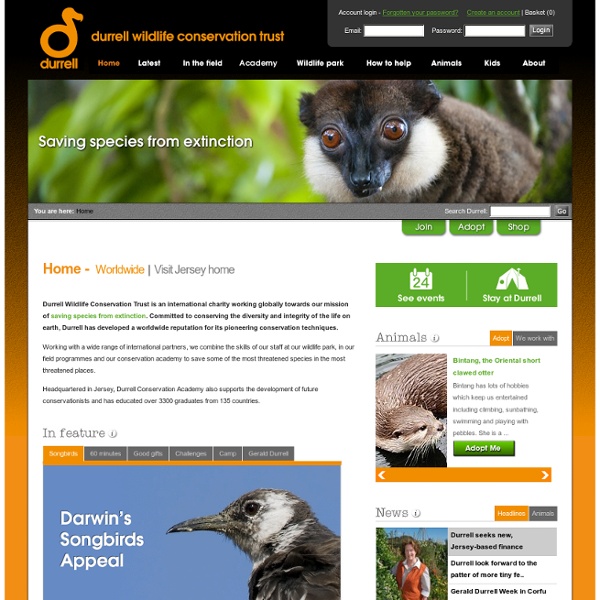



IberiaNature - A guide to Spain: environment, geography, nature, landscape, climate, culture, history, rural tourism and travel Peachy Green - Solar Power, Renewable Energy & Going Green Clearing the way for Europe's wildlife 1. October 2010 EuroNatur: Fragmentation of landscapes? New studies demonstrate alternatives Press Release from October 1, 2010 Radolfzell. In view of the rapid expansion of road and transport networks, especially in Central and Southeast Europe, the subject of landscape fragmentation is ever more urgent. "The best would be to already plan roads and railway lines in such a way that they give wildlife corridors a wide berth", demands EuroNatur director Gabriel Schwaderer. This manual is no kind of an inflated theoretical essay; instead, it helps finding, implementing and controlling the effectiveness of measures against the fragmentation of landscapes.Actual case studies from Croatia, Slovakia, Poland and Bulgaria provide a realistic support and genuine action plans. The printed manual: „Trans-European Wildlife Networks Project – TEWN. Please address orders to:EuroNaturKonstanzer Str. 22 78315 Radolfzell GermanyPhone +49 (0) 7732-9272-0Fax +49 (0) 7732-927222E-Mail: info@euronatur.org
Nature's Place ECNC Home - Expertise centre for biodiversity and sustainable development Nature Magnified SEDAC - Last of the Wild: Home Introduction Human influence is a global driver of ecological processes on the planet, on par with climatic trends, geological forces, and astronomical variations. The Wildlife Conservation Society (WCS) and the Center for International Earth Science Information Network (CIESIN) at Columbia University have joined together to systematically map and measure the human influence on the Earth’s land surface today. The Last of The Wild, Version Two depicts human influence on terrestrial ecosystems using data sets compiled on or around 2000. Spatial Resolution and File Format Global Data: Available in geographic coordinate system at 30 arc-second grid cell size, and Interrupted Goode Homolosine Projection (IGHP) at 1km grid cell size Continental-Level Data: Subsets of the global data, available only in geographic coordinate system Format: Grid data available in ArcInfo grids and .BIL files; vector data available in shapefiles
The Green Children Foundation The camera trap revolution: how a simple device is shaping research and conservation worldwide This article is available for a limited time on mongabay.com. It has also been published in a book by mongabay journalist, Jeremy Hance: Life is Good: Conservation in an Age of Mass Extinction. The book is also available in Europe. This is an expanded version of an article that ran on Yale e360 on December 5th, 2011: Camera Traps Emerge as Key Tool in Wildlife Research. A camera trap sits precariously between two forest elephants. Photo courtesy of Laila Bahaa-el-din/Panthera. I must confess to a recent addiction: camera trap photos. Although the majority of camera trap photos are bleary, fuzzy or simply show parts of an animal rather than the whole, some camera trap photos are on a par with the best in wildlife photography, capturing one thing that is truly difficult for photographers: a palpable sense of intimacy. But as mesmerizing as camera photos are, they serve a purpose beyond the aesthetic. It must be noted that camera trapping is not new. What’s out there? The cryptic species
Contact-Poisonous Plants of the World Introduction Touching certain plants can be dangerous. Many plants are highly poisonous when ingested, this is common knowledge. It is remarkable, however, that simply touching certain plant species can also be a serious health hazard. This document wants to give a concise overview of all contact-poisonous plants that may be of interest for travellers. Information about this interesting subject is usually hard to find, as it is scattered across many different sources like scientific works about dermatology or botany, regional field guides, travel literature, and magazines. Latest update: 25 October 2012 (Gympie reviewed). Contents Active PrinciplesEffects and TreatmentGeographical DistributionGuide to Contact-Poisonous Plants of the WorldReferenceIndex Active Principles Plants make use of different techniques to scare away unwanted visitors. Mechanical (not subject of this document). Chemical. Phototoxic. Mechanical-chemical. Electron-microscope image of a stinging hair of Urtica dioica.
Council of Europe Nature Ecological Networks and Emerald Network The pace of biodiversity decline is quickening worldwide. Habitat break-up, pollution, over-use of natural areas and the creation of artificial landscapes increase the rate of erosion, while reducing species' opportunity for migration, dispersion and exchange. How and by what means can this situation be put right? In 1995, the European Ministers of the Environment meeting in Sofia, launched the Pan-European Biological and Landscape Diversity Strategy (PEBLDS), so as to strengthen environment and biodiversity conservation policies. The setting up of a Pan-European Ecological Network covering Eurasia was one of the key steps taken under the Strategy. Ecological networks can positively influence the conditions for the survival of species populations in the fragmented natural areas and human dominated landscapes in Europe. Emerald Network The Emerald Network is an ecological network made up of Areas of Special Conservation Interest.
Raccoon The raccoon ( Though previously thought to be solitary, there is now evidence that raccoons engage in gender-specific social behavior. Related females often share a common area, while unrelated males live together in groups of up to four animals to maintain their positions against foreign males during the mating season, and other potential invaders. Home range sizes vary anywhere from 3 hectares (7 acres) for females in cities to 50 km2 (20 sq mi) for males in prairies. After a gestation period of about 65 days, two to five young, known as "kits", are born in spring. The kits are subsequently raised by their mother until dispersion in late fall. Etymology The mask of a raccoon is often interrupted by a brown-black streak that extends from forehead to nose.[8] The word "raccoon" was adopted into English from the native Powhatan term, as used in the Virginia Colony. Taxonomy Track Evolution Subspecies Description Skull with dentition: 2/2 molars, 4/4 premolars, 1/1 canines, 3/3 incisors Skeleton